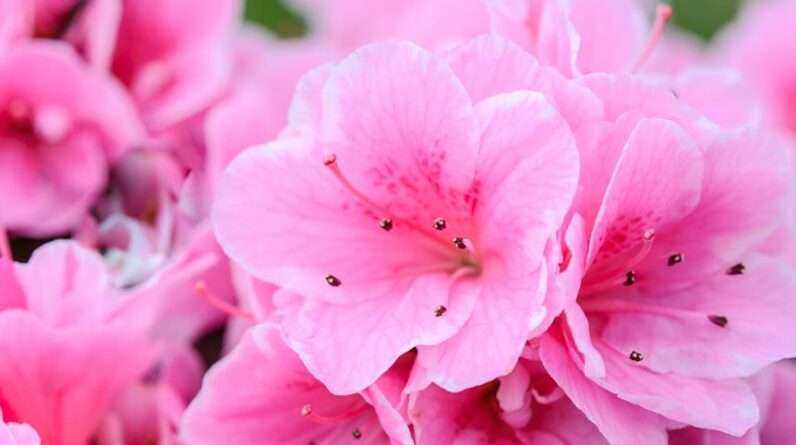
Consider the story of Emma, who, as a novice gardener, didn’t realize the importance of assessing her space before diving into planting. You’re likely in a similar position, eager to transform your outdoor area into a flourishing garden this spring.
The journey from planning to planting, however, is not without its challenges. From choosing the right plants that’ll thrive in your garden’s unique conditions to designing a layout that maximizes your space and sunlight, there’s much to consider. And we haven’t even touched on soil preparation, companion planting, or irrigation.
Curious about how to navigate these steps successfully? You’ll find that a strategic approach can make all the difference, setting you on a path to a rewarding gardening season.
Key Takeaways
- Assess garden space for optimal sunlight, water access, and soil quality before planting.
- Utilize companion planting and strategic placement to boost plant health and productivity.
- Apply organic mulch and balanced fertilizer in early spring to enrich soil and support growth.
- Choose plants that match your garden’s sun exposure, soil type, and space constraints.
Assess Your Space
Before diving into your garden layout, it’s crucial to meticulously measure your available space, factoring in sunlight, water access, and soil quality to accurately gauge the layout possibilities. Start by assessing the terrain. Is it flat or sloped? Both have implications for water drainage and sunlight exposure. Use a grid system or sketch to visualize your garden, considering any obstacles or structures that may cast shade or hinder growth. This isn’t just about avoiding issues; it’s about leveraging your garden’s unique features to create a dynamic and efficient layout.
Next, evaluate the soil. Is it sandy, clay, or loamy? Your garden’s success hinges on understanding its foundation since different plants thrive in different soil types. Don’t skip testing the soil pH; it’s a game-changer for nutrient uptake.
Water access isn’t just about availability; it’s about strategy. Consider how water will flow through your space. Are there areas prone to becoming waterlogged or excessively dry? Positioning plants according to their water needs prevents stress and promotes vigor.
Innovative gardening requires a blend of creativity and technical insight. By thoroughly assessing your space, you’re laying the groundwork for a garden that’s not only beautiful but thrives under your care.
Choose Your Plants
Selecting the right plants demands understanding your garden’s unique conditions, from sunlight exposure to soil type, to ensure each choice thrives in its designated spot. When you choose plants, consider their mature size to prevent overcrowding, especially in a small garden. Opt for a mix that suits your taste—be it vegetables, herbs, flowers, or shrubs—and delve into the specifics of their watering and care needs.
Innovative gardeners employ companion planting to bolster growth and ward off pests. This technique, coupled with selecting plants that attract pollinators, transforms your garden into a vibrant ecosystem.
| Plant Type | Planting Time | Benefits |
|---|---|---|
| Vegetables | Early Spring | Companion plants deter pests |
| Herbs | Mid-Spring | Attract pollinators; enhance flavors |
| Flowers | Late Spring | Beautify; attract pollinators |
| Shrubs | Throughout Spring | Structure; attract pollinators |
Design Your Layout
Crafting your garden’s layout requires careful consideration of plant size and growth habits to ensure optimal sunlight exposure and adequate spacing. As you dive into this phase, remember, the aim is to create a functional yet aesthetically pleasing space that maximizes your garden’s potential. Here’s how:
- Consider Plant Size and Growth Habits: Allocate space based on the mature size of plants to avoid overcrowding and ensure each plant receives enough sunlight.
- Sunlight Exposure: Orient your garden layout to maximize sunlight exposure, crucial for plant growth. Observe your garden area at different times to identify the sunniest spots.
- Raised Beds and Containers: Utilize these for efficient space use, easier access, and enhanced soil management. They’re ideal for compact gardens and can add levels to your layout.
- Pathways for Navigation: Integrate pathways to easily access all parts of your garden for maintenance and harvesting. This will save you time and protect your plants from being trampled.
- Companion Planting: Strategically place plants that benefit each other close together. Companion planting can help in pest control, pollination, and the use of space, enhancing overall garden productivity.
Incorporating these elements into your garden layout from the get-go sets a solid foundation for a thriving garden.
Prepare the Soil
Having designed your garden layout, it’s crucial to now focus on preparing the soil, a fundamental step to ensure your plants thrive. Begin by testing the soil pH and nutrient levels, a savvy move to pinpoint what your garden’s earth lacks or has in excess. This knowledge lets you tailor amendments precisely, ensuring optimal plant growth.
Incorporate compost and organic matter to enrich the soil, significantly boosting its fertility. These additions not only supply essential nutrients but also enhance the soil’s structure, making it a haven for your plants’ roots. Furthermore, consider the texture and drainage of your garden’s soil. You’re aiming for a loamy consistency—well-draining yet moisture-retentive, striking the perfect balance for robust plant health.
If you encounter compacted soil, don’t hesitate to break it up using a tiller or garden fork. This effort will improve aeration and water infiltration, two critical factors for thriving plant life. By taking these steps to prepare your soil, you’re laying a solid foundation for a garden that’s not only vibrant but also resilient, ensuring your green space flourishes throughout the season.
Implement Companion Planting
To maximize your garden’s potential, consider implementing companion planting, a strategic method that pairs different plants to leverage mutual benefits such as pest control and soil enhancement. This innovative approach not only optimizes your garden space but also significantly enhances plant health and reduces the reliance on chemical pesticides. By researching and selecting compatible plant combinations, you’re taking a pivotal step towards a thriving, sustainable garden.
Here’s how you can dive into companion planting:
- Research Compatible Combinations: Understand which plants benefit each other. For example, marigolds with tomatoes deter pests like nematodes and whiteflies.
- Maximize Garden Space: Strategically place plants to utilize every inch of your garden effectively.
- Natural Pest Control: Utilize plants like basil near tomatoes to naturally repel pests such as aphids, enhancing tomato flavor.
- Soil Enhancement: Select combinations that improve soil quality, ensuring a healthier garden ecosystem.
- Innovative Layouts: Get creative with your garden layout, integrating companion planting for aesthetic appeal and functionality.
Set Up Irrigation
After exploring the benefits of companion planting, it’s crucial to consider how you’ll maintain consistent moisture among your plants, making setting up a proper irrigation system the next step toward a flourishing garden. Gardening success hinges on choosing the right methods to retain moisture without overwatering or underwatering. Dive into the technicalities of garden design and plan your garden with an innovative irrigation solution in mind.
| Irrigation Type | Best For |
|---|---|
| Drip Irrigation System | Efficiently watering plants at their roots |
| Soaker Hoses | Targeted watering in specific areas |
| Micro-Sprinklers | Even coverage for small to medium areas |
| Timer Systems | Automated, consistent moisture levels |
| Strategic Component Placement | Ensuring all garden areas receive adequate water |
Add Mulch and Fertilizer
Once you’ve set up your garden’s irrigation system, it’s essential to focus on applying mulch and fertilizer, as these elements play pivotal roles in moisture retention, temperature regulation, and nutrient provision for your plants. The best garden plan incorporates these key components early on to ensure the foundation for a thriving garden.
- Consider how much space you have and adjust the quantity of mulch and fertilizer accordingly. Start small and scale up as needed to avoid over-application.
- Choose organic mulch such as straw, wood chips, or leaves to not only suppress weeds but also enhance soil fertility as it breaks down.
- Select a balanced fertilizer with nitrogen, phosphorus, and potassium to promote healthy growth and robust root development. Make sure it aligns with your plants’ specific needs.
- Apply mulch and fertilizer in early spring to set the stage for a successful growing season. This timing is crucial for maximizing the benefits of both.
- Plan to reapply organic mulch mid-season as it decomposes to continue benefiting from its moisture retention and temperature regulation properties.
Frequently Asked Questions
How Do You Layout a Garden (for Beginners)?
To layout your garden, start by sketching a plan that factors in plant sizes, sun exposure, and necessary spacing. Utilize raised beds for better management and don’t forget to include paths for easy access.
How Do I Plan My Garden for Spring?
To plan your spring garden, imagine sunlight dappling through vibrant leaves. Consider plant heights, companion planting for efficient space use, and research region-specific varieties. Space plants to prevent nutrient competition, maybe using raised beds for organization.
How Do I Prepare My Garden for the First Time?
To kickstart your garden, imagine transforming a barren plot into a vibrant oasis. First, clear debris and test soil pH. Then, thoughtfully plot your beds and select plants tailored to your environment for groundbreaking results.






